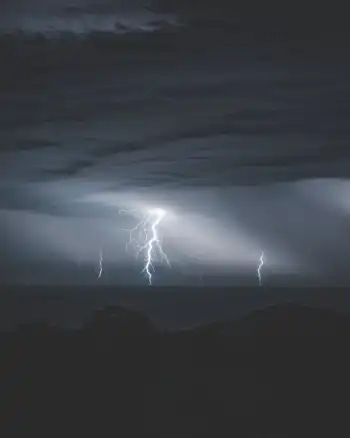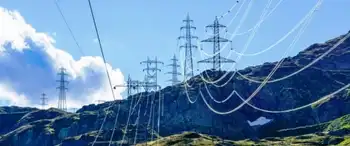Energy innovation breeds optimism
Close to home, thousands of homeowners and businesses will be looking to install solar photovoltaic systems to take advantage of Ontario's new feed-in-tariff program.
The cost of solar gear has slowly fallen over the past few years, but half the cost of an installed system still goes toward labour.
Expect to see more solar products on the market touted as do-it-yourself, offering a sort of a snap-together roofing system that has all the wiring and inverters embedded into solar panels.
Once installed, all that's required is the hiring of a certified electrician to inspect the system and make sure it's correctly connected to the grid.
Lowe's home improvement stores in California, for example, began selling such a product in December. Could an offering in Ontario be in the works?
Offshore wind projects will also blow into the Great Lakes, as developers in Ontario, New York, Michigan, Wisconsin and Ohio push forward on plans to capture several thousands of megawatts of offshore wind energy.
These are huge, first-of-a-kind projects and will move slowly, but Ontario – with a feed-in-tariff that pays 19 cents per kilowatt-hour for offshore wind – could see at least a couple of proposals move forward if financing challenges can be overcome.
This is potentially a huge job-creator, so first movers are likely to reap more of the employment rewards as European manufacturers seek a home base for expansion in North America.
This year we'll hear more talk of utility-scale energy storage being a near-term reality instead of a far-off possibility.
"System operators and regulators alike are contemplating how to integrate new storage technologies into the system," Ontario's Independent Electricity System Operator wrote last month in a report, in which it admits the province has lagged other jurisdictions.
"Many in the industry expect improvements in technology to result in storage becoming a cost-effective means of reliably incorporating large volumes of renewables," it added.
Ultracapacitors, molten salt, zinc-bromine flow batteries, zinc- and lithium-air batteries, and enhanced pumped storage are among the technologies that could, within just a few years, turn intermittent renewable energy like wind and solar into a more reliable, dispatch-on-demand resources.
Several utilities will launch pilot projects in 2010 to test out these technologies.
Another option for storage will be battery-powered vehicles that can plug into the grid.
In 2010 we'll see the U.S. launch of GM's much-touted Chevy Volt, which runs on a lithium-ion battery pack that's backed up by a small gas-fuelled generator.
Americans will also get a chance to kick the tires of the new Nissan Leaf all-electric car, and a few dozen will sign leases to test-drive Toyota's new plug-in Prius.
Canadians, however, will have to wait until 2011 and 2012 before sales begin here, but until then it will be fun to monitor reactions south of the border.
Better they work through first-generation product flaws than us, right?
It may benefit to have the extra time. Smart meters, now ubiquitous in southern Ontario, will bring time-of-use electricity pricing this year to most homeowners and small businesses.
Consumers of electricity will pay more during peak hours and less during off-peak hours, offering an incentive to power or charge appliances – including electric cars – overnight.
This will make in-home energy management a vital tool. The idea is to give homeowners a way to manage their household energy use online, respond to price signals, as well as participate in demand-response programs.
The Ontario Power Authority is already preparing this next stage, following in the footsteps of pioneering utilities such as Milton Hydro.
On December 23 the agency issued a call to industry to share the latest information related to "in-home control technologies" that would be deployed to electricity consumers in 2011.
Also on the near-term horizon is an effort in Ontario to help industry become more efficient by capturing waste heat that usually gets released from smokestacks.
Watch for a renewed push by the power authority to finally get such projects moving. In British Columbia and Alberta, expect to see industry and politicians take the potential of geothermal power more seriously.
The Canadian Geothermal Energy Association, in fact, is making progress. Last year it convinced both Enbridge Inc. and Chevron Corp. to become members, giving it more industry clout as it lobbies government for support.
Its goal is to get 5,000 megawatts of projects developed by 2015 – an ambitious target, considering Canada is the only country along the so-called Pacific ring of fire that has yet to establish a commercial geothermal power plant.
Did I mention algae yet?
The green stuff found in ponds certainly captured headlines in 2009 as a potential source of clean fuel and capturer of carbon dioxide. But this year we'll see algae moving out of the laboratory and into the field.
On that note, watch for an upcoming feature in the Star about an innovative algae project taking place right here in Ontario.
It will be a defining period for cleantech as the threats – and impacts – of climate change, peak oil and water scarcity become more evident.
Skeptics might call me overly optimistic. Maybe.
But never in the history of our species has innovation been so abundant and the innovators so determined.
Related News

California Skirts Blackouts With Heat Wave to Test Grid Again
LOS ANGELES - California narrowly avoided blackouts for a second successive day even as blistering temperatures pushed electricity demand to a record and stretched the state’s power grid close to its limits.
The state imposed its highest level of energy emergency for several hours late Tuesday and urged consumers to turn off lights, curb air conditioners and shut off power-hungry appliances after a day of extraordinary stress on electricity infrastructure as temperatures in many regions topped 110 degrees Fahrenheit (43 Celsius).
Electricity use had reached 52 gigawatts Tuesday, easily breaking a record that stood since 2006, according to the California Independent System…





